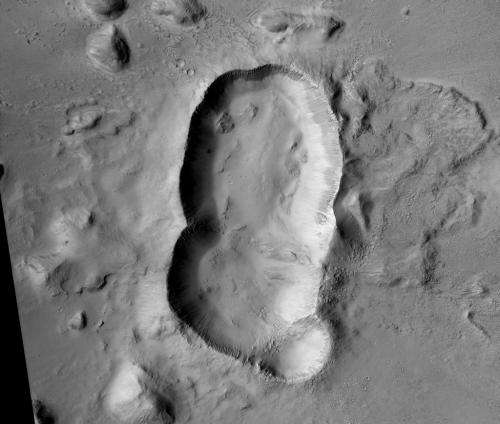Amazing impact crater where a triple asteroid smashed into Mars

At first glance, you many not guess that this feature on Mars is an impact crater. The reason it looks so unusual is that it likely is a triple impact crater, formed when three asteroids struck all at once in the Elysium Planitia region.
Why do planetary scientists think the three craters did not form independently at different times?
"The ejecta blanket appears to be uniform around the triple-crater showing no signs of burial or overlapping ejecta from overprinting craters," write scientists Eric Pilles, Livio Tornabene, Ryan Hopkins, and Kayle Hansen on the HiRISE website. "The crater rims are significantly stunted where the craters overlap."
This oblong-shaped crater could have been created from a triple asteroid, or it could have been a binary asteroid, and one broke apart, creating the three overlapping craters. The team says the two larger craters must have been produced by asteroids of approximately the same size, probably on the order of a few hundred meters across.
"The northern crater might have been created by a smaller asteroid, which was orbiting the larger binary pair, or when one of the binary asteroids broke up upon entering the atmosphere," the team explained. "The shape of the triple-crater is oblong, suggesting an oblique impact; therefore, another alternative would be that the asteroid split upon impact and ricocheted across the surface, creating additional craters."
Studying craters on Mars—and there are lots of them, thanks to Mars' sparse atmosphere—can help estimate the ages of different terrains, as well as revealing materials such as ice or minerals that get exposed from the impact.
Source: Universe Today





















